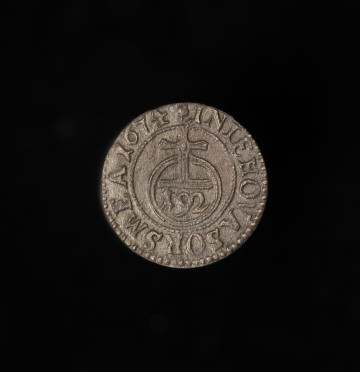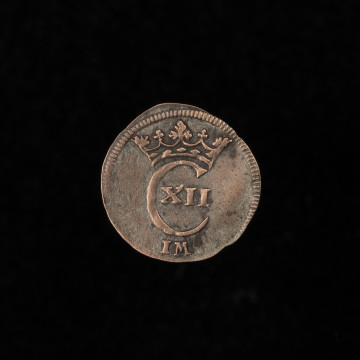
2/3 of a thaler (gulden)
1687
National Museum in Szczecin
Part of the collection: Pomeranian coins
After the death of Swedish King Charles XI in 1697, the mint in Szczecin was closed. During the reign of his son, Charles XII, an initiative to reopen the mint came from Rostock mintmaster Johann Memmies, who hoped to profit from coining spoils of war from the Great Northern War (1700–1721). In 1705, the provincial government granted him permission to strike coins based on the Leipzig twelve-thaler standard. Between 1705 and 1709, under Memmies’ management, the Szczecin mint primarily produced silver gulden (2/3 thalers) intended for paying the Swedish army, as well as ducats and low-value small denominations. According to the 1690 Leipzig thaler standard, 18 *gulden* were to be struck from twelve-lötige silver (750 fine). Although gulden emissions were substantial – over 120,000 thalers’ worth of silver was coined in the first three years – Memmies’ venture failed to generate profits, and in 1709, the mint was closed. This marked the final phase of Swedish coin production in Szczecin. The imagery on Charles XII’s gulden was largely consistent with that of his predecessor, Charles XI. The king was depicted in armour, surrounded by his Swedish royal title. The reverse bore an inscription around the grand coat of arms, identifying the coin as an issue for Swedish-controlled Western Pomerania (Pomeraniae Citerioris). Differences appeared in details such as mintmasters’ signatures, the placement of the date, and variations in design elements. Genowefa Horoszko
Author / creator
Object type
coin
Technique
coining
Material
silver
Origin / acquisition method
acquisition
Creation time / dating
Creation / finding place
Owner
The National Museum in Szczecin
Identification number
Location / status

1687
National Museum in Szczecin

1674
National Museum in Szczecin

1707
National Museum in Szczecin
DISCOVER this TOPIC
Castle Museum in Łańcut
DISCOVER this PATH
Educational path